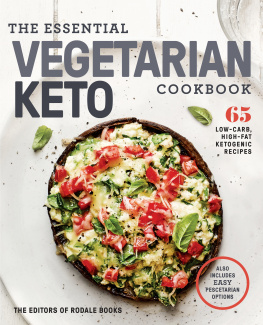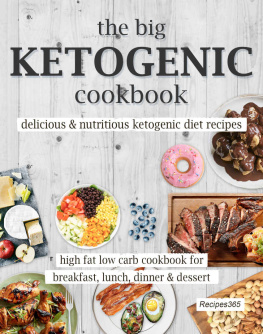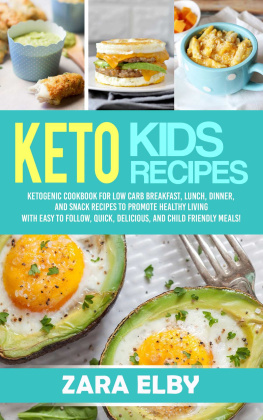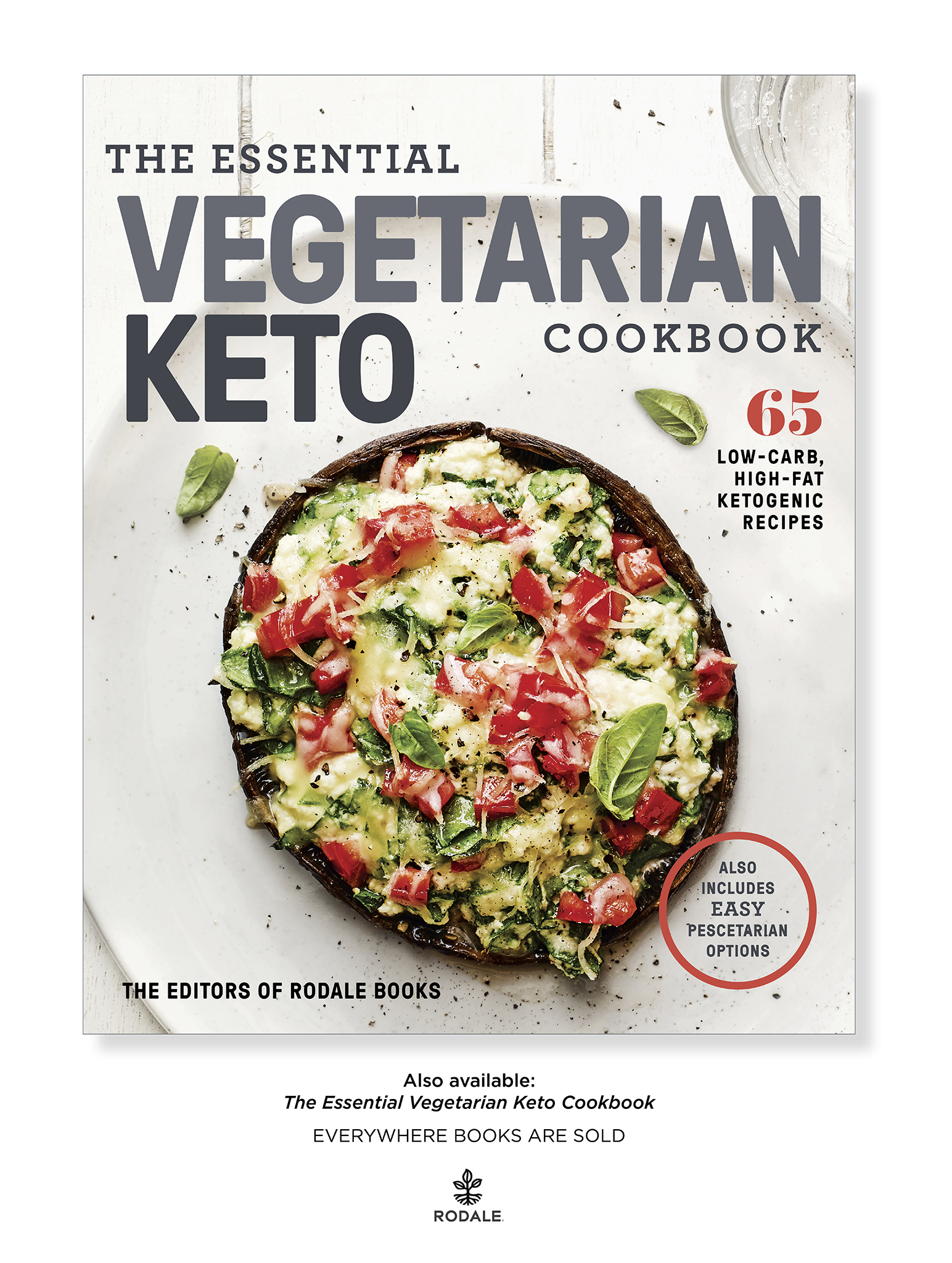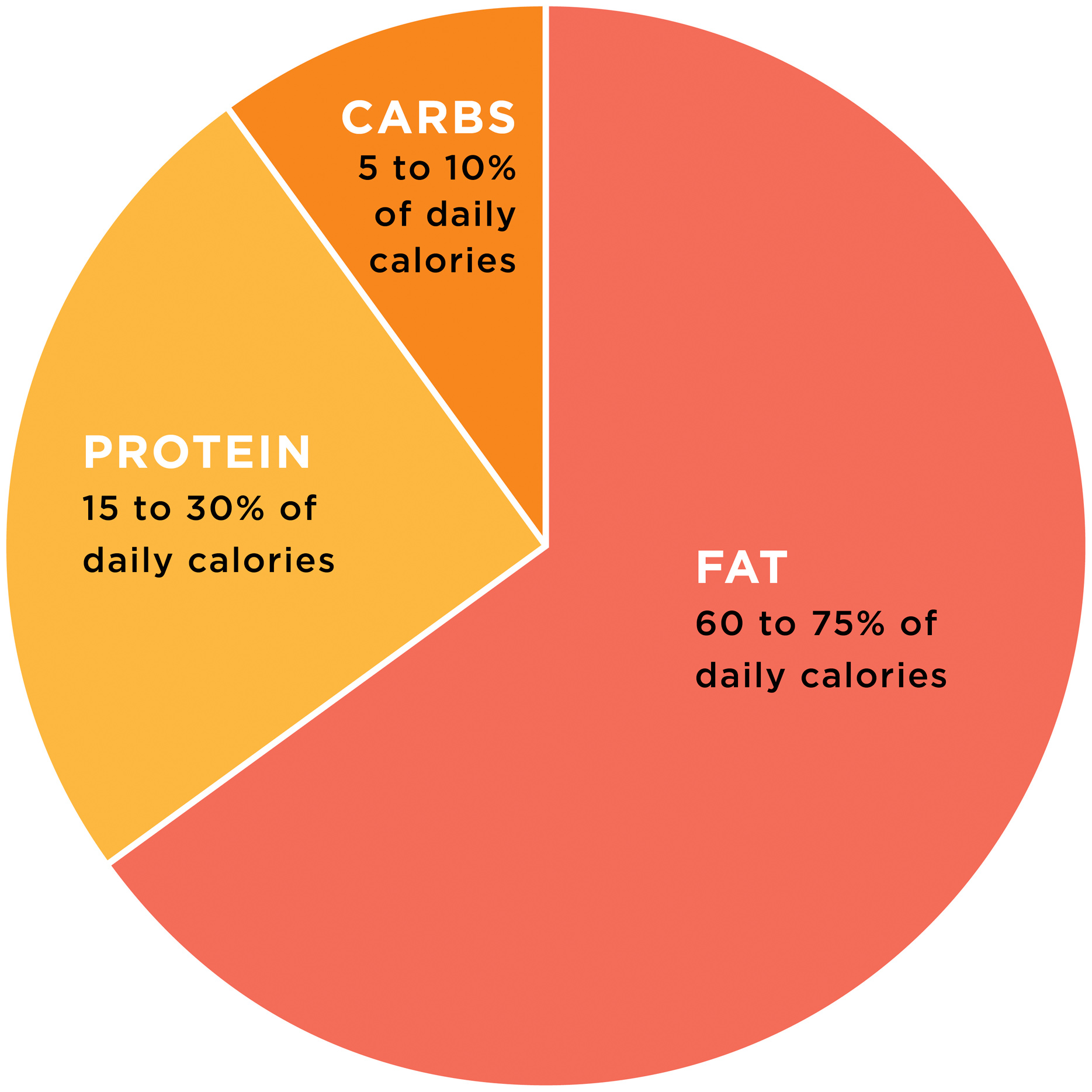VEGAN KETO 101
Welcome to the world of vegan keto cooking! The Essential Vegan Keto Cookbook features sixty-five delicious, easy-to-prepare vegan recipes that are all compliant with a ketogenic (keto) lifestyle. Whether you are a lifelong vegan who is learning about the ketogenic diet for the first time, or a seasoned keto pro who is just looking for something new to add to your kitchen repertoire, these recipes make it simple to stay in ketosis and enjoy the health benefits of the ketogenic diet.
Keto Diet Basics
The keto diet is a low-carb, high-fat, moderate-protein diet. To get into ketosis, your daily caloric intake will be comprised of 60 to 75 percent of calories from fat, 15 to 30 percent of calories from protein, and 5 to 10 percent of calories from carbohydrates. But unlike the traditional meat/butter-heavy keto diet, as a vegan, you will consume plant-derived fats and proteins instead.
On a ketogenic diet you will be closely tracking your daily intake of fat, protein, and carbs. These nutrients are called macronutrients or macros, and they are the key nutrients that provide the body with energy to function.
Keeping close track of your macros and testing your ketones is essential when you are beginning a keto diet as it might take some finessing of macros to figure out how many net carbohydrates keep you in ketosis. There are several ways to calculate your daily carbohydrate intake, but to keep things simple, the recipes in this book already have the calories and macros per serving calculated for youprotein grams, fat grams, and net carbohydrates. The reason we focus on net carbohydrates on a keto diet is because total carbohydrates include fiber, which is not absorbed by the body and need not be included in your total carbohydrate count to stay in ketosis.
As a rule of thumb, you will need to consume fewer than 20 grams of net carbs per day to stay in ketosis, but you will quickly learn that this number varies from person to person based on your age, weight, height, and activity level. For example: An active woman who requires 1,800 calories per day should consume 140 to 150 grams of fat, 90 to 112.5 grams of protein, and between 22.5 and 45 grams of net carbohydrates per day to remain in ketosis. For an active man who requires 2,200 calories per day, the macros would be 171 to 183 grams of fat, 110 to 137.5 grams of protein, and 27.5 to 55 grams of net carbs per day. Note the wide range of net carbohydrate grams that can keep you in ketosisfurther driving home the importance of using a macros tracker and testing your ketones.
How to Track Your Macros
Thanks to a variety of excellent apps, its easier than you think to track and fine-tune your daily macros. You can log your meals, calculate macros, and keep tabs on your net carb intake on the device of your choice. Here are a few apps that we trust:
Carb Manager (https://www.carbmanager.com)
MyFitnessPal (https://www.myfitnesspal.com)
MyMacros+ (https://getmymacros.com)
The Keto Diet App (https://ketodietapp.com)
How to Test Your Ketones
We recommend using one of these three methods to measure your ketones every day when you are first beginning your ketogenic diet.
Urine: You will use ketone strips to measure the level of ketones in your urine. Similar to a pH strip, the color of the strip will indicate whether you are in ketosis. These strips are typically affordable, offer quick results, and make it easy to figure out if you are in ketosis when you are first starting the diet. However, once you have been following a keto diet for an extended period of time, this method becomes less reliable.
Breath: You will breathe into a small device that is similar to a breathalyzer, which measures the level of acetone (a ketone by-product) in your breath. This method is also easy to administer, but the device tends to be expensive.
Blood: This is the most accurate way to test for ketones in your blood. With this method, you prick your finger and a machine reads the amount of ketones in your blood. The results are quick, but the machine and test strips are expensive and this becomes a somewhat invasive method when you are pricking your finger regularly.
Health Benefits of the Ketogenic Diet
Beyond the incredible fat-burning and weight-loss results you can achieve with a ketogenic diet, there are a host of widely documented benefits to your health, including:
Increased brain function: Better mental clarity, fewer migraines, and increased memory.
Increased energy: Keto foods are energizing because they help to lower your insulin levels, so tiredness disappears and energy increases in its place.
Clear skin: Overall decrease in skin inflammation including acne and eczema.
Joint and muscle pain relief: Due to lower insulin levels while on keto, inflammation in the joints and muscles will lessen. Arthritis can improve as well.
More restful sleep: Although you might have some difficulty sleeping during the keto flu stage when you first reduce your carbohydrate intake, most keto dieters experience deep, restful sleep.
Better cardiovascular health: Lower blood pressure and improved cholesterol levels.
Less gas and bloating: Bacteria that live in the gut feed off of sugars, producing gas. On the keto diet, there are fewer sugars for bacteria to feed on, resulting in less gas buildup. People have also reported less bloating due to reduced carbohydrate intake.
Reduced risk of acid reflux: Most people experience acid reflux from eating foods containing gluten, grains, and sugar. With a keto diet, you are eliminating these items.
Muscle gain and improved endurance: While following a keto diet, your blood sugars will be low, resulting in the body releasing more adrenaline while exercising, helping prevent your muscle proteins from breaking down.
Curbing diabetes: Since the keto diet is high in fat and low in carbs, this will automatically change the way the body uses its energy. This will help to ease diabetes symptoms, potentially reducing the need for insulin.
Suppressed appetite: Keto dieters have reported that their favorite benefit of the diet is that they dont feel hungry. Because of the high amount of fat intake on the keto diet, carb cravings are minimized or eliminated altogether.
Beware the Keto Flu (and Other Side Effects)
Look out for the keto flu: You may feel weak and irritable, and suffer from headaches, light nausea, brain fog, and an overall lack of motivation when you first begin reducing carbs. Stick with it! This is a detox period you will overcome.
Be mindful of alcohol intake: A lot of traditional carbsincluding the breads and pastas that you may have been eating before starting a keto dietabsorb a lot of liquid when consumed. They will now no longer be hanging out in your stomach. So, be cautious when consuming alcohol, because you are likely to feel the effects much more quickly, since your body will absorb alcohol faster. If you must consume a small amount of alcohol while on the keto diet, choose dry wines, sparkling wine, brandy, or vodka. Use only sparkling water as a mixer and consume alcohol in moderation.



